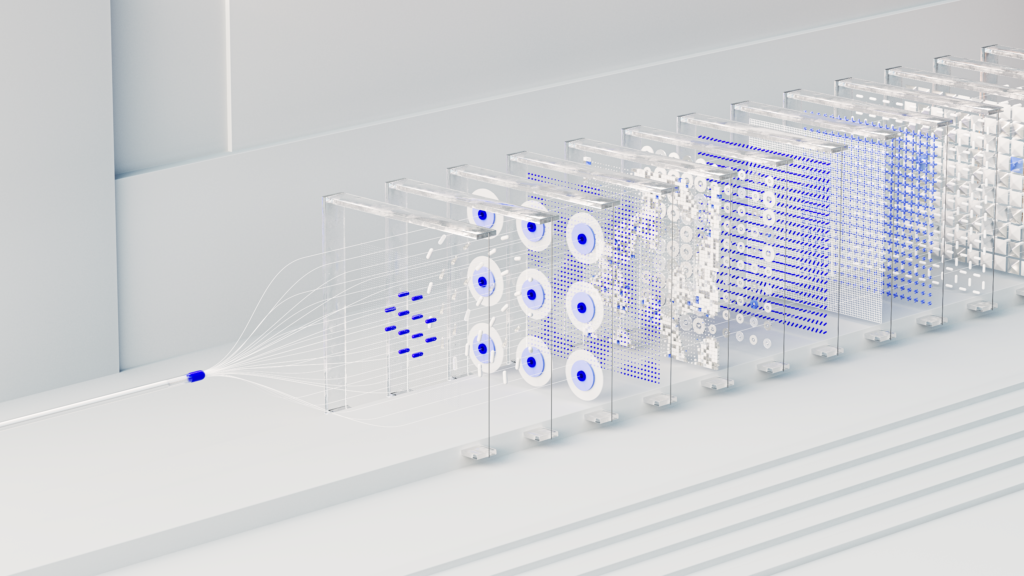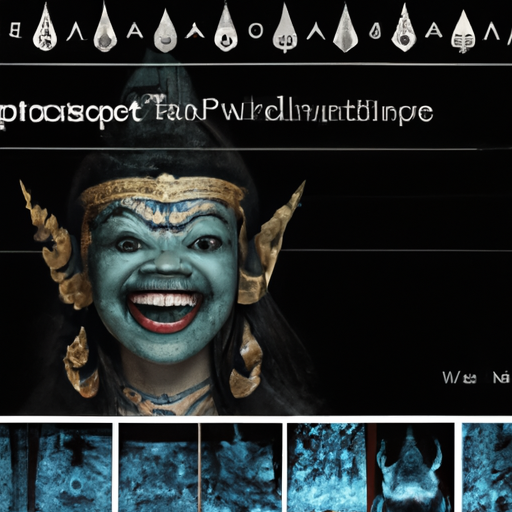
In “The Evolution of AI Technologies in Video Editing,” the video by Matt Wolfe explores various AI technologies and research. The video highlights several AI tools such as MagicEdit, CoDeF (AI Video Effects), Awesome New Text-To-Video, ConceptLab AI Art Generator, Wirestock AI Generator, IP-Adapter (More Control for AI Art), Gaussian Splattering (Better than Nerfs), Simulon AI & AR 3D Objects, Suno – AI Music Generator, and Podcast Ad Read Generator. These AI tools are capable of video editing, video effects, text-to-video generation, AI art generation, image generation, and music generation. The video also discusses the use of AI for generating realistic 3D objects in augmented reality and AI-generated ad reads for podcasts.
If you’re into cool AI tech and research that’s still in the pipeline or not widely known, Matt Wolfe’s video is a must-watch for you. The video showcases impressive advancements in AI, including mind-blowing video editing and effects. It also introduces tools like MagicEdit that can transform videos, and ConceptLab AI Art Generator, which can generate realistic and novel creatures. The video not only covers AI’s impact on video editing but also explores its applications in various creative fields, such as music generation and 3D object creation for augmented reality. Get ready to have your mind blown by the incredible possibilities of AI technologies!

The Emergence of AI in Video Editing
In recent years, there has been a significant advancement in artificial intelligence (AI) technologies, leading to its emergence in various industries. One such industry is video editing, where AI tools are revolutionizing the way videos are created and edited. In this article, we will explore the past methods and constraints of traditional video editing, the initial introduction of AI in the editing field, and the intricacies of AI technologies in video editing.
Past methods and constraints of traditional video editing
Before the advent of AI technologies, video editing involved manual and time-consuming processes. Video editors had to go through each footage, trim and arrange them, add transitions and effects, and ensure seamless continuity. This process required technical expertise and often resulted in lengthy production timelines.
Furthermore, traditional video editing tools had limitations in terms of capabilities. They lacked the ability to analyze the content of videos, understand context, and make intelligent decisions. This resulted in a labor-intensive editing process that often required multiple iterations to achieve the desired outcome.
Initial introduction of AI in the editing field
The introduction of AI in video editing marked a paradigm shift in the industry. AI technologies brought automation and intelligence to the editing process, making it faster, more efficient, and accessible to a wider range of users. The initial AI tools in video editing focused on specific tasks, such as automatic video stabilization, object tracking, and scene detection.
These early AI tools used computer vision algorithms and deep learning models to analyze video footage, identify objects and scenes, and make intelligent editing decisions. They significantly reduced the manual effort required and brought new possibilities in terms of creativity and efficiency.
Intricacies of AI Technologies in Video Editing
As AI technologies in video editing continue to evolve, it is important to understand how they work and the science behind AI-generated content. In this section, we will delve into the intricacies of AI technologies in video editing, including how AI in video editing works and the science behind AI-generated content.
How AI in video editing works
AI technologies in video editing rely on machine learning algorithms and deep neural networks. These algorithms are trained on vast amounts of data, including annotated video footage, to learn patterns, features, and context. The trained models are then used to analyze and process new videos.
AI in video editing can perform tasks such as automatic video editing, scene detection, object recognition, and motion tracking. By analyzing the content of videos, AI tools can make intelligent decisions and automate various editing tasks, leading to increased efficiency and creativity.
The science behind AI-generated content
AI-generated content in video editing is made possible through the science of generative models. Generative models use AI algorithms to generate new content, such as images, videos, or text, based on existing data. In the context of video editing, generative models can generate new scenes, apply visual effects, or even create entirely new videos.
The science behind AI-generated content involves complex mathematical equations, statistical analysis, and optimization algorithms. These models learn the statistical patterns and structures in the training data and use them to generate new content. The advancements in generative models have opened up new possibilities for creativity and innovation in the field of video editing.
The Impact of AI Tools like MagicEdit
One of the most notable AI tools in video editing is MagicEdit. MagicEdit is an AI-powered video editing tool that enables users to automate various editing tasks and enhance the creativity of their videos. In this section, we will explore the features and capabilities of MagicEdit, user reviews and experiences, and how MagicEdit represents the evolution of AI in video editing.
Features and capabilities of MagicEdit
MagicEdit offers a wide range of features and capabilities that streamline the video editing process. It utilizes AI algorithms to analyze video footage, detect scenes, identify objects and faces, and make intelligent editing decisions. Some key features of MagicEdit include:
- Video Stylization: MagicEdit can apply various styles and visual effects to videos, transforming the look and feel of the footage.
- Video Magic Mix: With MagicEdit, users can blend multiple videos seamlessly, creating stunning visual compositions.
- Video Out Painting: This feature allows users to expand the video frame by generating additional content based on the existing footage, resulting in a more immersive viewing experience.
- Local Editing: MagicEdit enables users to make precise edits to specific elements within the video, such as changing the background or modifying objects.
These features empower users to unleash their creativity and achieve professional-quality editing results with minimal effort.
User reviews and experiences with MagicEdit
Users who have experienced MagicEdit are highly impressed with its capabilities and ease of use. They appreciate the time-saving nature of the tool, as it eliminates the need for manual editing tasks. Many users have praised MagicEdit for its ability to generate realistic and seamless video compositions, making it an invaluable asset for both professionals and enthusiasts.
Furthermore, users have expressed their excitement about the potential of MagicEdit in conjunction with other AI tools. The ability to combine MagicEdit with AI-generated content, such as text-to-video or AI art, opens up a world of possibilities for innovative and unique video creations.
How MagicEdit represents the evolution of AI in video editing
MagicEdit is a prime example of how AI has transformed the video editing landscape. It signifies the evolution of AI in video editing by bringing automation, intelligence, and creativity to the editing process. The advanced algorithms and features of MagicEdit enable users to achieve remarkable editing results, even without extensive technical skills.
Moreover, MagicEdit showcases the potential of AI tools in unlocking new levels of creativity and efficiency. As AI technologies continue to advance, we can expect further developments in video editing tools, opening up endless possibilities for content creators and revolutionizing the industry.
AI for Video Effects: CoDeF
AI technologies are not limited to video editing alone; they have also made a significant impact on video effects generation. CoDeF (AI Video Effects) is an example of an AI tool that revolutionizes video effects creation. In this section, we will explore the tech behind CoDeF, its influence on video effects generation, and the public response to CoDeF advancements.
Understanding the tech behind CoDeF
CoDeF leverages AI algorithms to generate high-quality video effects automatically. It uses deep learning models trained on vast amounts of video data to analyze and understand the different visual elements in a video. By analyzing the visual content, CoDeF can generate visually stunning and realistic effects.
The technology behind CoDeF involves complex neural networks that can learn and replicate various visual effects found in videos. These neural networks analyze the input video, identify the desired effect, and generate the corresponding visual output, all in a matter of seconds.
The influence of CoDeF on video effects generation
CoDeF has revolutionized the way video effects are created and applied. Traditionally, creating video effects required manual editing and compositing techniques, which were time-consuming and required specialized skills. With CoDeF, video effects can be generated automatically, eliminating the need for manual intervention.
The influence of CoDeF extends beyond time savings and convenience. The AI-generated effects produced by CoDeF often surpass traditional effects in terms of quality and realism. The advanced neural networks used by CoDeF can analyze and replicate complex visual patterns, resulting in visually stunning and captivating effects that are indistinguishable from manually created ones.
Public response to CoDeF advancements
The public response to CoDeF advancements has been overwhelmingly positive. Users, including both professionals and enthusiasts, have embraced the convenience and quality of AI-generated video effects. Many have praised CoDeF for its ability to generate effects that were previously unattainable without extensive manual editing.
Furthermore, CoDeF has inspired a new wave of creativity and experimentation in the video effects community. Artists and creators are now exploring new possibilities and pushing the boundaries of visual effects with the help of AI technologies like CoDeF. This public response highlights the transformative impact of AI in the field of video effects.

Text-To-Video Generation with AI
Another area where AI has made significant advancements is text-to-video generation. AI tools like Awesome New Text-To-Video harness the power of natural language processing and computer vision algorithms to transform text-based prompts into compelling video content. In this section, we will explore how Awesome New Text-To-Video operates, the impacts and applications of text-to-video generation, and the user feedback and industry response to this technology.
How Awesome New Text-To-Video operates
Awesome New Text-To-Video utilizes AI algorithms to process text-based prompts and generate corresponding video content. The AI model is trained on a vast corpus of text and video data, enabling it to understand the context of the prompt and generate relevant video visuals.
When a text prompt is provided, the AI model analyzes the semantic and visual aspects of the text. It then generates a video based on the inferred meaning and desired visual elements. The resulting video can include animated scenes, characters, objects, and text overlays, depending on the nature of the prompt.
Impacts and applications of text-to-video generation
Text-to-video generation has numerous impacts and applications across various industries. It allows content creators and marketers to streamline the video production process and generate engaging videos quickly. With text-to-video tools, you can easily transform a script or concept into a visually appealing video without the need for extensive video production resources.
The applications of text-to-video generation are vast. It can be used for creating explainer videos, animated advertisements, virtual tours, educational content, and much more. These tools make video creation accessible to a wider audience, empowering individuals and businesses to communicate their ideas effectively through videos.
User feedback and industry response to text-to-video tech
Users who have experimented with text-to-video technologies have shared positive feedback about their experiences. Many users appreciate the simplicity and efficiency of these tools, especially for generating short and visually appealing videos. They highlight the convenience of transforming text-based ideas into engaging video content, even without extensive video editing skills.
The industry response to text-to-video technology has been equally enthusiastic. Marketing agencies, video production companies, and content creators are embracing these AI-powered tools to enhance their video creation processes and reach their target audience more effectively. The industry recognizes the potential of text-to-video tech in democratizing video production and reducing production costs.
Exploring AI Art Generation: ConceptLab and IP-Adapter
AI art generation is an area that has witnessed significant progress in recent years. Tools like ConceptLab AI Art Generator and IP-Adapter have changed the way art is created and transformed. In this section, we will explore the functions of ConceptLab AI Art Generator, the potential and applications of IP-Adapter, and user experiences with these AI art tools.
ConceptLab AI Art Generator and its functions
ConceptLab AI Art Generator is a powerful tool that utilizes AI algorithms to generate unique and creative art pieces. It enables users to input prompts or concepts and transforms them into stunning artwork. Some key functions of ConceptLab AI Art Generator include:
- Novel Concept Generation: ConceptLab AI Art Generator can generate novel concepts and ideas that have not been seen before. It explores uncharted territories and generates art that pushes the boundaries of creativity.
- Style Transfer: The tool can apply various artistic styles to the generated concepts, creating visually striking and diverse art pieces.
- Customization and Fine-tuning: ConceptLab AI Art Generator allows users to customize and fine-tune the generated artwork, adding their personal touch and creative input.
These functions open up new possibilities for artists, designers, and creators to explore and experiment with AI-generated art.
Potential and applications of IP-Adapter
IP-Adapter is an AI tool that focuses on providing more control for AI art. It allows users to influence and guide the AI-generated content, ensuring a more personalized and curated output. With IP-Adapter, users can provide explicit instructions and constraints to shape the AI’s creative process.
The potential applications of IP-Adapter are vast. It can be used in art exhibitions, digital marketing campaigns, or even personal art projects. IP-Adapter brings a new dimension of control and customization to AI-generated art, enabling artists and creators to infuse their unique vision into the final artwork.
User experiences with ConceptLab and IP-Adapter applications
Users who have explored the world of AI art using tools like ConceptLab and IP-Adapter have had exciting and transformative experiences. They have lauded the ability of these tools to generate fresh and innovative ideas, challenging traditional art creation methods.
Furthermore, users appreciate the level of control and customization offered by IP-Adapter, allowing them to shape the AI-generated art according to their preferences. This level of personalization has resulted in unique and captivating art pieces that reflect the artist’s vision.
The user experiences and feedback demonstrate the potential of AI art generation tools in revolutionizing the art industry and pushing the boundaries of creativity.

Image Generation through AI: Wirestock AI Generator
AI technologies have also made significant advancements in image generation. Wirestock AI Generator is an example of an AI tool that utilizes generative models to create stunning images. In this section, we will explore the mechanism of Wirestock AI Generator, the influence and potential of AI in image generation, and the public reaction to this technology.
The mechanism of Wirestock AI Generator
Wirestock AI Generator leverages generative models, specifically deep convolutional neural networks, to generate high-quality, realistic images. The AI model is trained on a vast dataset of images, allowing it to learn the intricate details, features, and structures present in different image categories.
When given a prompt, such as a textual description or a sample image, Wirestock AI Generator analyzes the semantic information and generates an image that aligns with the given prompt. The AI model uses its learned knowledge and statistical patterns to create visually pleasing and coherent images.
Influence and potential of AI in image generation
AI has had a transformative influence on image generation. Through deep learning algorithms and generative models, AI tools like Wirestock AI Generator can create images that are virtually indistinguishable from real photographs. This has tremendous potential in various industries and applications.
AI-generated images can be used in digital marketing, advertising, website design, and more. They enable businesses to create visually appealing and captivating visuals, improving user engagement and brand recognition. AI in image generation also opens up new avenues for digital art and creative expression, allowing artists to explore uncharted territories.
Public reaction to Wirestock’s technology
The public has reacted positively to the advancements in AI image generation, as demonstrated by the widespread adoption of tools like Wirestock AI Generator. Users appreciate the ease of use and the ability to generate high-quality images quickly.
One of the key factors driving the positive reaction is the quality of the AI-generated images. With the level of realism and attention to detail achieved by tools like Wirestock AI Generator, users can seamlessly incorporate AI-generated images into their creative projects or marketing campaigns.
The public’s acceptance of AI in image generation showcases the growing trust and recognition of AI technologies in the creative industry.
AI and Music: Suno AI Music Generator
AI technologies are not limited to visual arts; they have also made significant advancements in music generation. The Suno AI Music Generator is an example of an AI tool that uses deep learning and machine learning techniques to compose original music. In this section, we will understand Suno’s technology, explore the impacts and uses of AI-generated music, and examine the audience perception and acceptance of Suno.
Understanding Suno’s technology
Suno AI Music Generator leverages deep learning algorithms and machine learning models to compose original music. The AI model is trained on a vast collection of musical compositions from various genres and styles. This training allows the model to learn intricate patterns, harmonies, melodies, and rhythms.
To generate music, users can input parameters such as genre, mood, tempo, and duration. The Suno AI Music Generator then analyzes these parameters, applies learned musical patterns, and generates original compositions that align with the given inputs.
Impacts and uses of AI-generated music
The impacts and uses of AI-generated music are significant and varied. AI music tools like Suno provide musicians, content creators, and music producers with a versatile creative resource. AI-generated music can be used in various applications, including background music for videos, podcasts, commercials, and even original compositions.
AI-generated music also presents unique opportunities for collaboration and experimentation. Musicians can integrate AI-generated compositions into their own work, remix and reinterpret them, or use them as inspiration for new musical ideas.
Audience perception and acceptance of Suno
The audience’s perception and acceptance of AI-generated music, such as that produced by Suno, have been positive overall. Listeners appreciate the quality and diversity of AI-generated music compositions. The ability of AI tools to generate music that aligns with specific moods, genres, or styles has resonated with both musicians and listeners alike.
While some skepticism initially existed regarding the authenticity and artistic value of AI-generated music, acceptance has grown as the technology has become more refined. The audience recognizes that AI tools like Suno can enhance the music creation process and act as a valuable resource for music producers and composers.

Realistic 3D Objects in AR with AI: Simulon
AI technologies have also made significant advancements in the realm of augmented reality (AR) and the creation of realistic 3D objects. Simulon is an AI tool that combines computer vision and AI algorithms to generate lifelike 3D objects in AR environments. In this section, we will explore how Simulon operates, the role of AI in AR and 3D object creation, and the societal reception and response to Simulon technology.
How Simulon operates
Simulon operates by utilizing AI algorithms that analyze real-world objects and scenes captured through computer vision. The AI model learns the attributes, structures, and textures of objects and uses this knowledge to generate realistic 3D representations.
Using Simulon, users can capture images or videos of real-world objects and scenes, and the AI algorithms generate virtual 3D objects that can be placed and interacted with in augmented reality environments. This process provides a seamless integration of virtual objects into the real world, creating immersive AR experiences.
The role of AI in AR and 3D object creation
AI plays a crucial role in AR and 3D object creation, as it enables the generation of realistic and interactive virtual objects. By analyzing real-world data and understanding the intricacies of objects and scenes, AI tools like Simulon can create 3D models that accurately replicate the physical properties of objects.
The advancement in AI technologies has made it possible to generate 3D objects that seamlessly blend with the real world, enhancing the immersion and interactivity in AR experiences. AI enables users to place virtual objects in their surroundings, manipulate them, and even interact with them based on real-world physics.
Societal reception and response to Simulon technology
The reception and response to Simulon technology have been met with excitement and curiosity. The ability to generate realistic 3D objects in AR environments opens up new possibilities for entertainment, education, retail, and many other industries.
Society’s response to Simulon reflects the growing acceptance and interest in AR technologies and their potential applications. As people experience the immersive and interactive nature of AR with realistic 3D objects, the demand for such experiences is expected to rise. Simulon represents a significant step forward in the development of AR technologies and showcases the transformative impact of AI in this domain.
Conclusion: The Future of AI in Video Editing
The current progression of AI technologies in video editing has paved the way for exciting advancements and innovations. From AI-powered video editing tools like MagicEdit to the generation of realistic 3D objects in AR with tools like Simulon, AI has become an integral part of the video editing process.
Looking ahead, the future of AI in video editing holds immense potential. We can expect AI tools to become more sophisticated, offering enhanced automation, intelligence, and creativity. The continued evolution of AI technologies will undoubtedly impact the industry by reducing production timelines, increasing efficiency, and expanding creative possibilities for content creators and professionals.
Predictions for future advancements include improved text-to-video generation, more advanced AI video effects, AI-assisted storytelling, and seamless integration of AI tools into existing video editing software. These advancements will democratize video editing, making it more accessible to a broader audience and enabling anyone to create compelling and high-quality videos.
The impacts of these evolutions in AI technologies will extend beyond the industry itself. AI-generated content will become more prevalent in our daily lives, from social media feeds and advertising campaigns to entertainment and education. The proliferation of AI in video editing will shape the way we consume and engage with visual content, opening up new avenues for creativity and transforming the societal landscape.
In conclusion, the emergence of AI in video editing signifies a new era of possibilities and innovation. The integration of AI technologies in video editing tools has revolutionized the way videos are created, edited, and consumed. As AI continues to evolve, we can expect its influence to extend further, reshaping industries and society at large.




